The pork butt is a commonly used cut of pork that comes from the shoulder area of the pig. It is also referred to as “Boston Butt” or “Pork Shoulder” and is popular in many cultures for its flavor, juiciness, and versatility. While it can be cooked in various ways, it is often slow-cooked over low heat to bring out its unique taste and texture. This cut of meat has become increasingly popular in the United States due to its affordability and deliciousness. In this article, we will discuss what is pork butt, how it differs from other cuts of pork, and some tips for cooking with it.
What Is Pork Butt?
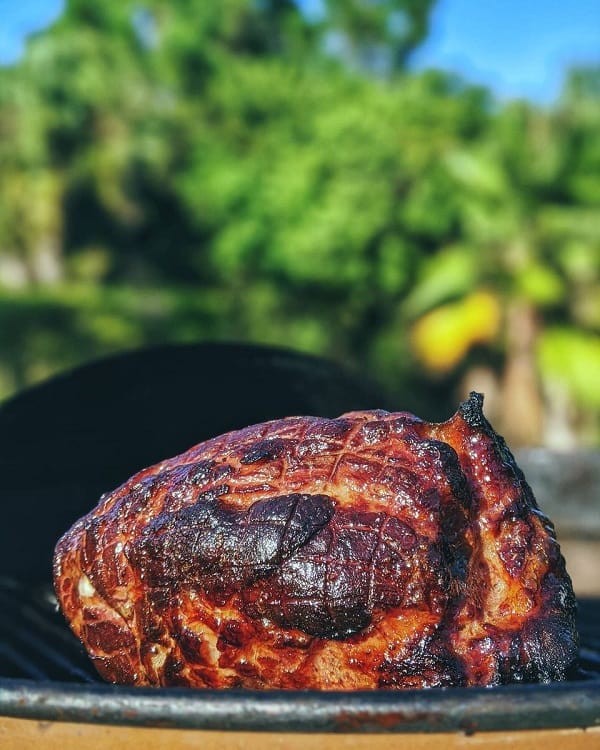
Contrary to the name suggests, pork butt does not come from the pig’s rear end. It is derived from a different part of the animal altogether. The pork butt, also known as the Boston butt, is a cut that comes from the upper shoulder area of the pig. This may seem confusing, but it’s important to remember that the terminology used in the meat industry can be quite misleading.
The name “pork butt” can be traced back to the historical practice of storing and transporting pork. In the early days, pork shoulders were packed into barrels, known as “butts,” for preservation during long journeys. As time went on, the name stuck, despite the cut being nowhere near the actual rear end of the pig.
Pork butt is highly regarded for its exceptional flavor and versatility in cooking. It is a well-marbled cut, which means it has a good amount of intramuscular fat. This fat content contributes to its tenderness and juiciness when cooked properly. Whether you choose to roast, braise, smoke, or grill it, pork butt has the ability to transform into a succulent and flavorful dish.
One of the most popular preparations of pork butt is pulled pork. Slowly cooked over low heat, the meat becomes incredibly tender, making it effortless to pull apart. This method allows the flavors to develop and intensify, resulting in a melt-in-your-mouth experience that is hard to resist.
Aside from pulled pork, pork butt can be used in other dishes. It can be cubed and added to stews or chili, sliced into steaks for grilling, or ground up for homemade sausages. The possibilities are truly endless, limited only by your culinary imagination.
When purchasing pork butt, looking for well-marbled cuts with a good layer of fat is advisable. This will ensure that the meat remains moist and flavorful during cooking. Additionally, opting for organic or pasture-raised pork can enhance the overall quality and taste of the final dish.
Where Does Pork Butt Come From On The Pig’s Body?
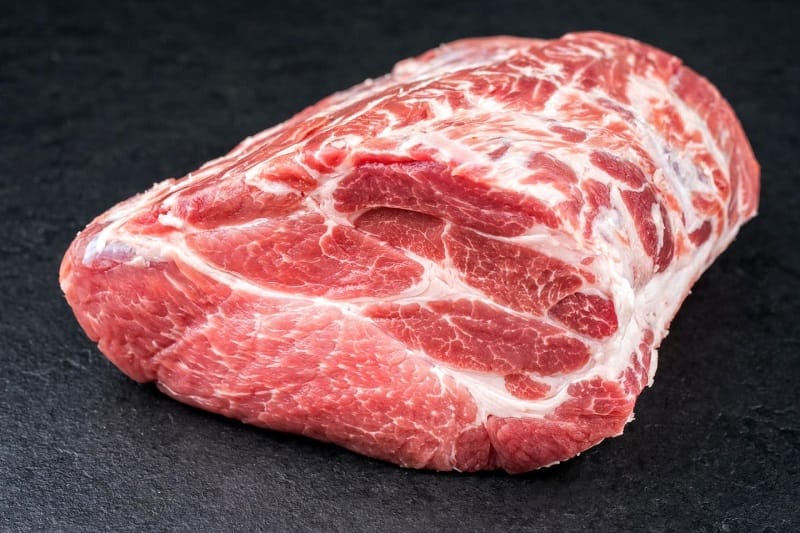
Pork butt, also known as Boston butt or blade roast, is a cut of meat from the upper part of the pig’s shoulder. It is located right behind the pig’s neck and typically includes a small piece of the shoulder blade. This particular cut is moderately tough with a good amount of connective tissue, which makes it ideal for slow-cooking methods like roasting or smoking.
Its name can be misleading, as it has nothing to do with the pig’s backside or buttocks. Instead, the term “butt” is believed to have originated from packing less prized pork cuts into barrels, which were called “butts.” Over time, this shoulder cut became associated with New England and was eventually referred to as Boston butt. However, it’s important to note that the name is unrelated to the pig’s anatomy or shipping containers.
Read more:
- How Much Pulled Pork For 100 People
- Increase Temp After Wrapping Pork Shoulder
- How Long To Smoke Pork Shoulder At 275
What Is The Difference Between Pork Butt And Pork Shoulder?
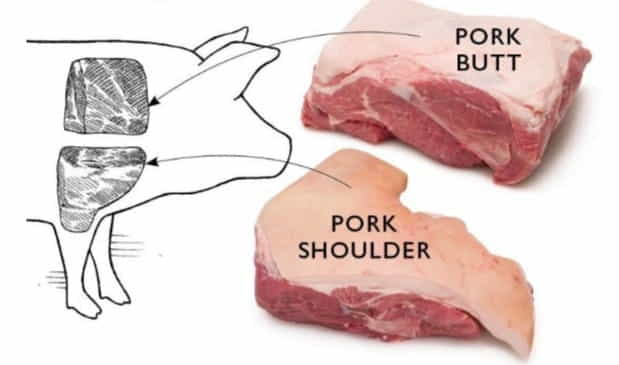
Regarding BBQ and cooking, the terms “pork butt” and “pork shoulder” are often used interchangeably, causing some confusion. However, despite their similar names, there are some key differences between these two cuts of meat:
- Location: Pork butt and pork shoulder come from different pig parts. The pork butt is cut from the upper shoulder of the pig, while the pork shoulder is taken from the lower portion.
- Fattiness: Pork butt is typically more marbled with fat, which makes it especially juicy and flavorful when cooked low and slow. On the other hand, pork shoulder contains less fat but still offers a great taste.
- Tenderness: Due to the higher fat content, pork butt tends to be more tender and succulent. Although slightly leaner, pork shoulder can still be tender with the right cooking techniques.
- Versatility: Both pork butt and pork shoulder are versatile cuts that can be used in various recipes. They are commonly used for pulled pork, stews, roasts, and braises.
- Cooking methods: Both cuts benefit from slow cooking methods such as smoking, braising, or roasting. However, pork shoulder may take longer to cook than pork butt due to its denser meat.
In summary, while pork butt and pork shoulder may be used interchangeably in some instances, they come from different parts of the pig and vary in fat content, tenderness, and cooking times. Understanding these differences can help you choose the right cut of meat for your cooking needs.
What Is The Significance Of The Name “Pork Butt,” And Why Is It Sometimes Called “Boston Butt”?
The name “Pork Butt” holds significance in the culinary world, particularly barbecue. Despite its name, the Boston butt has nothing to do with a pig’s backside but refers to the wider end of the front shoulder. Here are some key points regarding the significance of the name “Pork Butt” and why it is sometimes called “Boston Butt”:
- Misnomer: In this context, the term “butt” is derived from the old English word, which means the wide end of something, like the butt of a gun. However, it has led to humorous names for barbecue teams and restaurants, showcasing the playful nature of the barbecue culture.
- Anatomical Position: The Boston butt comes from the upper part of the shoulder, specifically right behind the pig’s neck. It is often referred to as the blade roast and typically includes a small piece of the shoulder blade. The lower part of the shoulder, known as the picnic or arm roast, is a separate cut.
- Origins of the Name: The exact origin of the name “Boston Butt” is somewhat obscure. While there are claims that it stemmed from shipping practices in colonial times, where less prized cuts of pork were packed into barrels called “butts,” there is little historical evidence to support this theory.
- Standardization and Railroads: The name “Boston Butt” gained prominence in the late 19th century when railroads transformed the meatpacking industry from regional to national. As different parts of the country had varying methods of carving up pigs, various cuts earned names associated with specific regions. The pork shoulder had multiple named cuts, such as New York shoulders and California hams.
- Generic Term: The term “butt” in agricultural manuals supports the idea that it was used as a generic term for the large or thicker end part of something. So, it is likely that the name “Boston Butt” was simply a reference to the wider end of the pork shoulder rather than being directly linked to shipping containers or a specific geographical origin.
In summary, the name “Pork Butt,” also known as “Boston Butt,” refers to the wider end of the front shoulder of a pig. It is a misnomer that has been popularized in the barbecue culture. Although its origins remain unclear, it is likely rooted in the generic usage of the term “butt” to describe the larger end of something.
What Is The Ideal Cooking Method For Pork Butt?
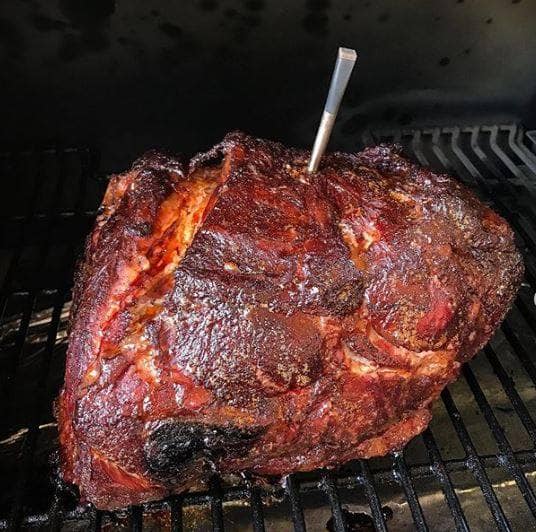
When it comes to cooking pork butt, there are several methods you can choose from. Each method has its unique benefits and produces delicious results. Here are some of the ideal cooking methods for pork butt:
- Oven Roasting: Cooking pork butt in the oven is popular and convenient. Preheat the oven to 450ºF, then cook the pork butt for 30 minutes to develop a crispy exterior. Without opening the oven, reduce the temperature to 250ºF and bake for 7-8 hours until the internal temperature reaches 195-200ºF. The slow cooking process in the oven allows the meat to become tender and juicy.
- Slow Cooking: A slow cooker is another great option for cooking a pork butt. Season the pork butt with your desired spices, place it in the slow cooker, and cook on low heat for 5-7 hours, depending on the size of the cut. The low and slow cooking method allows the meat to become fork-tender and infused with flavors.
- Instant Pot: If you’re looking for a quicker cooking method, the Instant Pot is an excellent choice. Season the pork butt, place it in the Instant Pot, and cook on high pressure for about 90 minutes. The pressure cooker mechanism tenderizes the meat in a fraction of the time, yielding succulent results.
- Smoking: If you can access a smoker, smoking pork butt can give it a unique and smoky flavor. Slow smoke the pork butt between 225-250ºF for several hours until the internal temperature reaches 195-200ºF. The smoking process imparts a delicious flavor reminiscent of barbecued meats.
Each cooking method has its advantages, so it’s up to you to decide which one suits your preference and available equipment. Whether you choose to oven roast, slow cook, use an Instant Pot, or smoke your pork butt, the result will be a tender and flavorful cut of meat that can be used in various dishes.
How Does Pork Butt Compare To Pork Shoulder In Terms Of Fat Marbling And Connective Tissue?
When comparing pork butt and pork shoulder in terms of fat marbling and connective tissue, there are a few key differences to consider:
- Fat Marbling: Pork butt, also known as Boston butt, has intense fat marbling throughout the meat. This high-fat content contributes to its tenderness and flavor. On the other hand, pork shoulder, also known as picnic shoulder, has less marbling and fat compared to pork butt.
- Connective Tissue: The pork butt contains significant connective tissue responsible for its juicy and tender texture when cooked low and slow. The connective tissue breaks down during cooking, resulting in succulent pulled pork. The pork shoulder, although it also has connective tissue, has less of it compared to the pork butt.
- Cooking Methods: Due to its high-fat content and connective tissue, pork butt is ideal for slow-cooking methods such as smoking, braising, and stewing. These methods allow the fat and connective tissue to break down, resulting in tender and flavorful meat. With its lower fat content, pork shoulder can be cooked at slightly higher temperatures and is often roasted on the grill. It is also commonly cooked with the skin on to achieve a crispy exterior.
In summary, pork butt has more fat marbling and connective tissue than pork shoulder, making it more suitable for low and slow cooking methods. Pork shoulder, with its lower fat content, can be cooked at slightly higher temperatures and is often used for roasting. Both cuts can result in delicious dishes when cooked properly.
Can Pork Butt Be Cooked Using High Heat Methods Like Grilling, Or Is It Best Suited To Low And Slow Cooking?
When it comes to cooking pork butt, there are various methods you can choose from depending on your desired results. While high-heat methods like grilling can certainly be used to cook pork butt, it is generally best suited to low and slow cooking. Here’s why:
- Flavor Infusion: Low and slow cooking allows the flavors to penetrate the meat thoroughly, resulting in a delicious and succulent final product. The collagen in the pork butt breaks down gradually, resulting in a tender and melt-in-your-mouth texture.
- Toughness Taming: A pork butt is a tough cut of meat with a lot of connective tissue. The connective tissues break down by cooking it slowly over a lower heat, making the meat more tender and easier to chew.
- Juicy and Moist: Low and slow cooking methods, such as smoking or braising, help retain the moisture inside the pork butt. This ensures a juicier and more flavorful result compared to high-heat methods like grilling, which tend to dry out the meat.
- Time Is Key: Pork butt is a relatively large and thick piece of meat, and the low and slow cooking method allows for the even distribution of heat throughout the cut. This is crucial to ensure the meat is cooked evenly and thoroughly, reducing the risk of undercooked areas.
While grilling can give a pork butt a tasty charred exterior, it may not be sufficient for achieving the desired tenderness and flavor. However, if you prefer the high-heat method like grilling, consider pre-cooking the pork butt using low and slow methods, such as smoking or braising, before finishing it off on the grill to get that desired smoky flavor and caramelization.
Does Pork Butt Always Come With A Fat Cap And No Skin?
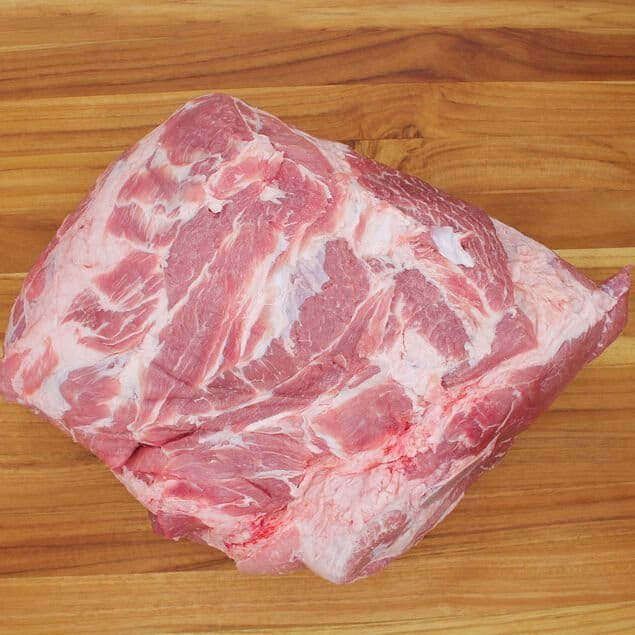
When it comes to pork butt, it usually comes with a fat cap and no skin. However, it’s important to note that the fat cap can vary in thickness depending on the cut of meat. Here are some key points about the fat cap and skin on pork butt:
- Fat Cap: The fat cap refers to the fat layer covering one side of the pork butt. It is typically thicker and harder compared to the marbling within the meat. The fat cap serves multiple purposes during cooking, including flavor, moisture, and protection.
- Flavor and Moisture: The fat in the cap adds richness and depth of flavor to the meat when cooked. As it renders down, it bastes the meat, infusing it with moisture and enhancing its tenderness. This is especially evident when slow-cooking the pork butt, as the fat gradually melts and permeates the meat, resulting in a succulent and flavorful outcome.
- Bark Formation: The fat cap also plays a role in the formation of the outer crust, or bark, on the pork butt. When the fat cap is left intact during cooking, it helps create a crispy and flavorful exterior. However, the fat cap’s thickness and texture can affect the bark’s crispiness. Thinner fat caps might render down completely, allowing a more pronounced bark to form, while thicker ones might result in a softer exterior.
- Skin: Unlike pork belly, commonly used to make crispy pork skin, pork butt does not typically come with skin. The skin is usually removed during butchering, leaving behind the fat cap and the meat. This makes pork butt more suitable for slow-cooking methods, such as smoking, roasting, stewing, or braising, focusing on achieving tender and flavorful meat rather than crispy skin.
What Are The Advantages Of Using a Pork Shoulder With The Skin On?
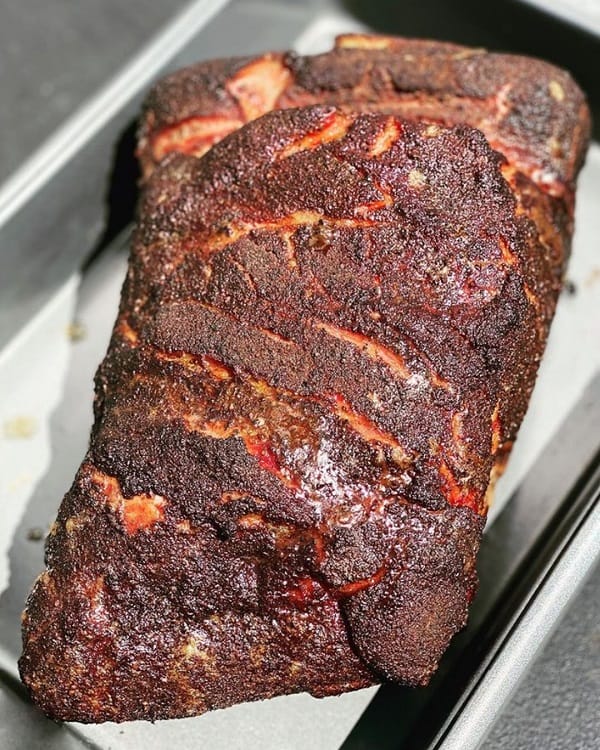
There are several advantages to using a pork shoulder with the skin on when slow-roasting. Here are the main benefits:
- Crispy Crackling: The pork shoulder’s skin turns golden and crunchy, crackling when slow-roasted. It adds a wonderful texture and a burst of flavor to each bite.
- Unctuous Richness: The layer of subcutaneous fat between the skin and the meat of a pork shoulder adds an unctuous richness to the roast. This fat layer renders during cooking, infusing the meat with flavor and keeping it moist and tender.
- Enhanced Flavor: Leaving the skin on while slow-roasting ensures that the entire layer of fat is left intact. This brings a treasured richness and depth of flavor to the pork, similar to what you would find in pork belly or point of brisket. The flavors are absorbed by both the meat and fat, resulting in a super flavorful roast.
- Slow-cooker Ease: Slow-roasting a large cut like a skin-on pork shoulder takes a long time but requires minimal effort. You can put it in the oven in the morning and go about your day without worrying about it until later. It’s a perfect option for festive entertaining or hosting a dinner party.
- Easy Carving: Carving a skin-on pork shoulder is easier than a boneless cut. The skin acts as a guide, making it simpler to navigate through the meat. The straight bone in the leg of a fresh ham also makes it easier to carve.
Using a pork shoulder with the skin on allows you to enjoy the benefits of a slow-roasted, tender, and flavorful roast with the added bonus of crispy crackling. It’s the perfect centerpiece for a festive meal or any special occasion.
Conclusion
In conclusion, understanding what pork butt is and how to cook it can elevate your culinary skills and open up a whole new world of delicious possibilities. So, the next time you ask yourself, “What is pork butt?” remember that it’s a flavorful cut of meat that comes from the upper shoulder area of the pig. Embrace its versatility, affordability, and rich flavor, and get ready to create mouthwatering dishes that will leave your friends and family asking for more.
- https://en.wikipedia.org/wiki/Boston_butt
- https://www.foodnetwork.com/how-to/packages/food-network-essentials/pork-butt-vs-pork-shoulder
- https://www.thespruceeats.com/pig-diagram-and-pork-chart-995306

Hey readers! Chip Holland here, and I’m a Manager of this website. My passion for writing about it only matches my passion for BBQ. Follow my blog for mouth-watering recipes, tips, and tricks for the perfect smoke, grill, and BBQ. I’m sure you won’t be disappointed!
